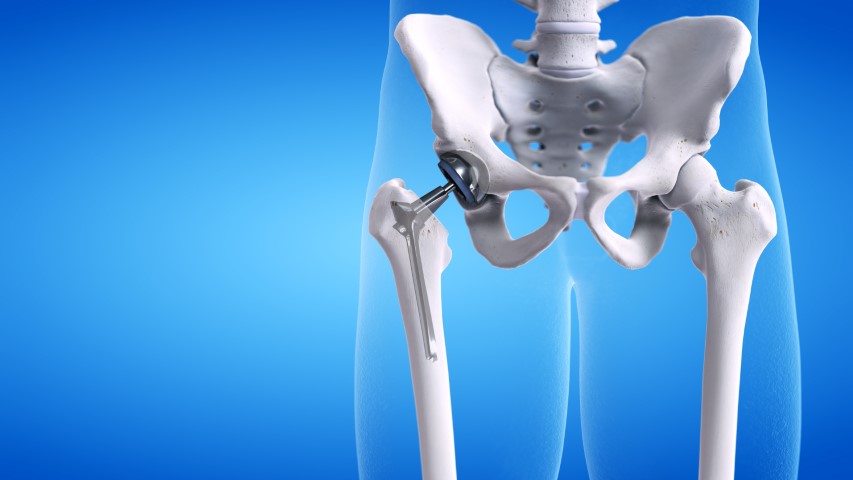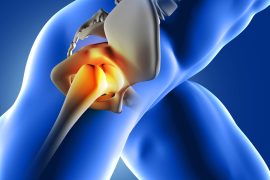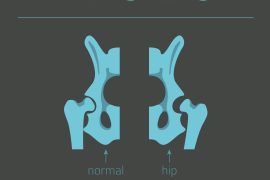Many people suffering from arthritis of the hip find relief in medicines, exercises, and weight management programs. However, several patients experience intense pain and discomfort. Doctors may recommend hip replacement surgery for patients who do not get relief from other treatments.
Total Hip Arthroplasty (THA) is one of the most successful surgeries performed in orthopedics. THA provides reliable outcomes such as pain relief, restoration of the joint up to functionality, and overall improved quality of life.
The traditional surgical approach to total hip replacement uses a single, long incision to view and access the hip joint. Another variation is a minimally invasive procedure in which one or two shorter incisions are used to reduce pain and promote a speedy recovery. But, it is not suitable for all patients. You need to discuss different surgical options with your orthopedic surgeon based on your condition.
Traditional hip replacement surgery involves making an incision of 12-18 inches along the patient’s thigh. The doctor then removes the diseased hip joint and replaces it with an implant. THA is a major surgery that requires ample time for the tissue in the body to adapt and adjust to the new implant. The point of the incision also needs time to heal as the muscles and tissue in the leg are disrupted.
Only an orthopedic surgeon can determine whether the patient can opt for a minimally invasive hip replacement procedure. Like every other surgery, a hip replacement procedure comes with its risks. Some of the most adverse events that occur post-surgery are loosening, deformation or infection, fracture of the bone or components, etc.



Advances and Innovations in Total Hip Replacement
- Virtual Reality
Thanks to virtual reality, it is possible to replicate the exact feeling of being inside an operating room. The virtual simulation allows for unlimited practice, paving way for the surgical technique to be mastered with great precision, thus reducing potential errors in the procedure. Moreover, multiple operators can simultaneously work on the same surgery, remotely.
Virtual reality opens up new avenues in total joint arthroplasty as it can be used to try new surgical techniques and get familiarised with new instruments and devices.
- 3D printing technology
In recent years, 3D printing technology is a major advancement in the field that has increasingly been used in total joint arthroplasty. The technology is used to create patient-specific guides, allowing the surgeon to position the implants with precision according to the pre-operative plan. This is called PSI or Patient-specific Instrumentation.
This technology uses CT scans to personalize a preoperative plan for each patient’s anatomy. It aids the operative surgeon to plan and execute with great precision the positioning of the acetabular implant while preserving hip stability.
The development of computer navigation and robotics has led to the minimization of human error and improved the accuracy of implant positioning and restoration of the native hip biomechanics.
- Robotic Total Hip Replacement
Robots have different functions. While some operate autonomously, others are active-constrained, i.e the surgeon is in control. In the latter system, a 3D plan based on CT scans is handed over to the operating surgeon based on which they can optimize the surgery. The goal is to complete the procedure with precision to deliver patient-specific operative plans.
Although the role of the surgeon is critical, the robotic arm delivers surgeon-led procedural plans that are based on a complete understanding of the patient’s anatomy to give an accurate outcome to the patient.
Benefits of new technology and advancements in Total hip replacement surgery
- Precision
The new advancements in Total Hip Replacement Surgery have led to aiding the medical procedure to be completed with greater precision and hence, results derived for patients are better. The new technology is patient-centric and helps the surgeon understand the particular patient’s anatomy better, thereby delivering what the patient needs. Moreover, as compared to total knee replacement, total hip replacement surgery reduces stress on the bones and increases the life of the implants.
- Long term results
Total hip replacement is a long-term solution that enjoys a higher success rate. Evidence shows that 80-85% of hip replacements still function after 20 years of insertion.
- Less recovery time & minimally invasive technique
New advancements have resulted in minimally invasive surgeries that require less recovery time. It is likely that the patient may lose less blood and may experience less muscle damage or soreness.
- Data from CT scans
Robotic technology presents the potential to capture data from CT scans for processing of the pre-op plan, and final execution of the hip replacement and implant positioning. Using this data and artificial intelligence allows us to tailor our approach to deliver personalized solutions.
- Improved Quality of Life
With minimally-invasive and precise procedures becoming possible, thanks to these advancements, the patient can recover sooner and return to their normal lives faster as compared to traditional surgery. Lesser side effects and lower chances of complications also contribute to a fuller, speedy recovery and better quality of life.
Total hip arthroplasty is a safe procedure, resulting in substantial improvements for patients. However, there is a significant increase in the number of THAs in the world, with an even more evident increase in younger patients undergoing the surgery. It is important to note that it is imperative to achieve the best functional outcomes as the population demands utmost functionality post-surgery. To achieve this, the advancements and innovations in the field showcase substantial potential, where improvements are still in process.





Comments are closed.